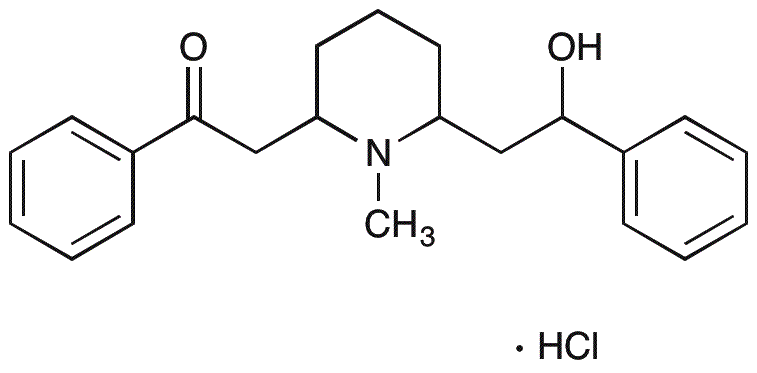(-)-Lobeline hydrochloride is widely utilized in research focused on various applications:
- Smoking Cessation: This compound has been studied for its potential to aid in smoking cessation by acting on nicotine receptors, providing a possible alternative for individuals looking to quit smoking.
- Neuropharmacology: Researchers explore its effects on neurotransmitter systems, particularly in studying conditions like addiction and mood disorders, offering insights into new therapeutic strategies.
- Respiratory Stimulant: It has been investigated for its ability to stimulate respiratory function, making it relevant in the treatment of respiratory depression in clinical settings.
- Cardiovascular Research: The compound is also examined for its cardiovascular effects, contributing to studies on heart health and potential treatments for heart-related conditions.
- Drug Development: Its unique properties make it a candidate for developing new medications, particularly in the fields of addiction therapy and respiratory treatments, providing a foundation for innovative solutions.
General Information
Properties
Safety and Regulations
Applications
(-)-Lobeline hydrochloride is widely utilized in research focused on various applications:
- Smoking Cessation: This compound has been studied for its potential to aid in smoking cessation by acting on nicotine receptors, providing a possible alternative for individuals looking to quit smoking.
- Neuropharmacology: Researchers explore its effects on neurotransmitter systems, particularly in studying conditions like addiction and mood disorders, offering insights into new therapeutic strategies.
- Respiratory Stimulant: It has been investigated for its ability to stimulate respiratory function, making it relevant in the treatment of respiratory depression in clinical settings.
- Cardiovascular Research: The compound is also examined for its cardiovascular effects, contributing to studies on heart health and potential treatments for heart-related conditions.
- Drug Development: Its unique properties make it a candidate for developing new medications, particularly in the fields of addiction therapy and respiratory treatments, providing a foundation for innovative solutions.
Documents
Safety Data Sheets (SDS)
The SDS provides comprehensive safety information on handling, storage, and disposal of the product.
Product Specification (PS)
The PS provides a comprehensive breakdown of the product’s properties, including chemical composition, physical state, purity, and storage requirements. It also details acceptable quality ranges and the product's intended applications.
Certificates of Analysis (COA)
Search for Certificates of Analysis (COA) by entering the products Lot Number. Lot and Batch Numbers can be found on a product’s label following the words ‘Lot’ or ‘Batch’.
*Catalog Number
*Lot Number
Certificates Of Origin (COO)
This COO confirms the country where the product was manufactured, and also details the materials and components used in it and whether it is derived from natural, synthetic, or other specific sources. This certificate may be required for customs, trade, and regulatory compliance.
*Catalog Number
*Lot Number
Safety Data Sheets (SDS)
The SDS provides comprehensive safety information on handling, storage, and disposal of the product.
DownloadProduct Specification (PS)
The PS provides a comprehensive breakdown of the product’s properties, including chemical composition, physical state, purity, and storage requirements. It also details acceptable quality ranges and the product's intended applications.
DownloadCertificates of Analysis (COA)
Search for Certificates of Analysis (COA) by entering the products Lot Number. Lot and Batch Numbers can be found on a product’s label following the words ‘Lot’ or ‘Batch’.
*Catalog Number
*Lot Number
Certificates Of Origin (COO)
This COO confirms the country where the product was manufactured, and also details the materials and components used in it and whether it is derived from natural, synthetic, or other specific sources. This certificate may be required for customs, trade, and regulatory compliance.


